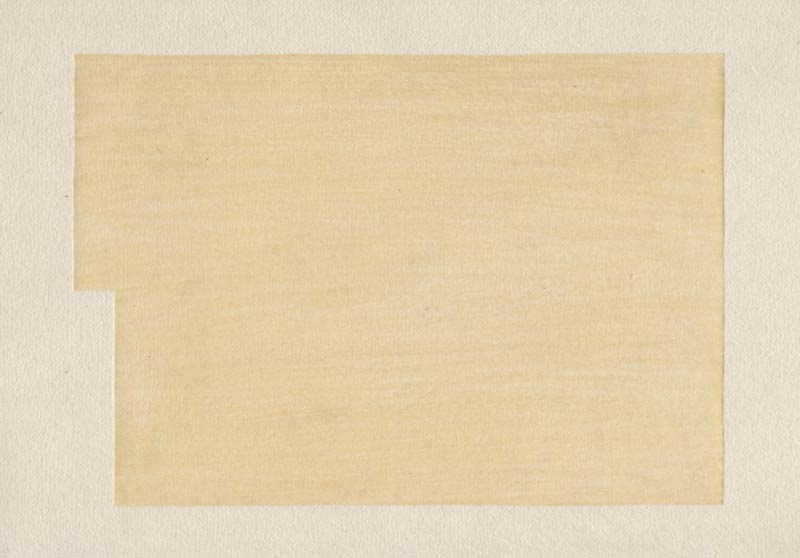Posted by Dave Bull at 2:25 AM, July 26, 2012 [Permalink]
Here we go again ... printing in finally under way on the third print in the Arts of Japan series. The first impression is nothing to write home about - but it of course provides an important base on which the subsequent work will build:

I don't think this print will have a whole lot of impressions. I'm thinking that four or five should suffice to get the 'base' ready, and the brushwork should maybe take another four or five. I'll then do the outlines and embossing, and it'll be ready. So perhaps ten will do it, although we'll see what comes up along the way.
(I'm hoping that I can get this batch done within the week - not only because the weather is very hot here now, with a concomitant risk of mold, but because there is now just one week left to go before Jed and I open up our Kickstarter project. That'll be happening as the clock turns to the 1st of August, New York time. I'm not sure why Jed chose that particular moment to get going; perhaps no other reason than that it might be a convenient time for him, I'm not sure ...)
This impression is a surprise for me. I've seen you do a lot of background impressions before, but they always have shown up as a flat application of color. This one has a distinct wood grain pattern, so much so that the wood tone + the grain pattern makes it look like you have photo-shopped the wood and paper pictures together.
Is this a result of this particular block, or is there a printing technique that you use to accentuate the wood grains?
In my shin-hanga collecting, I've always thought that the presence of wood grains in the background color indicates an "early" impression and that as the block ages, the grain tends to disappear in later editions. But, all of your work is "early" editions and I've never seen this distinct of a grain pattern before in your stuff.
Marc

I usually hide the woodgrain as much as I can in my 'normal' printmaking, simply because I basically see it as a 'defect'. I know that in modern work people use it a lot, and they blather about stuff like 'letting the wood talk ...' etc. etc., but in the ukiyo-e tradition wood is used not for any aesthetic reason, but purely as a step in the process of manufacturing the finished object - the print. It should not be visible, period. So you will rarely see woodgrain in my prints, because I do whatever I can to supress it (something that is sometimes very difficult with new blocks, as you mention).
This though, is not ukiyo-e. It will be a reproduction of a segment of a scroll. A very old scroll, and one that has 'been around'. It is not 'clean' at all, being faded in parts, soiled in others, and generally has a pretty beaten-up appearance. So for this one, I'm going to spend the first four or five impressions creating a kind of toned/mottled/slightly stained background 'bed' on which the brushwork will then appear.
If you think is messy at this point, wait until we get a bit farther!



